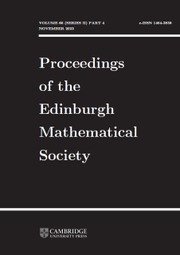Crossref Citations
This article has been cited by the following publications. This list is generated based on data provided by Crossref.
Gongopadhyay, Krishnendu
and
Mondal, Rahul
2025.
Conjugate reversibility in complex special linear groups.
Periodica Mathematica Hungarica,




